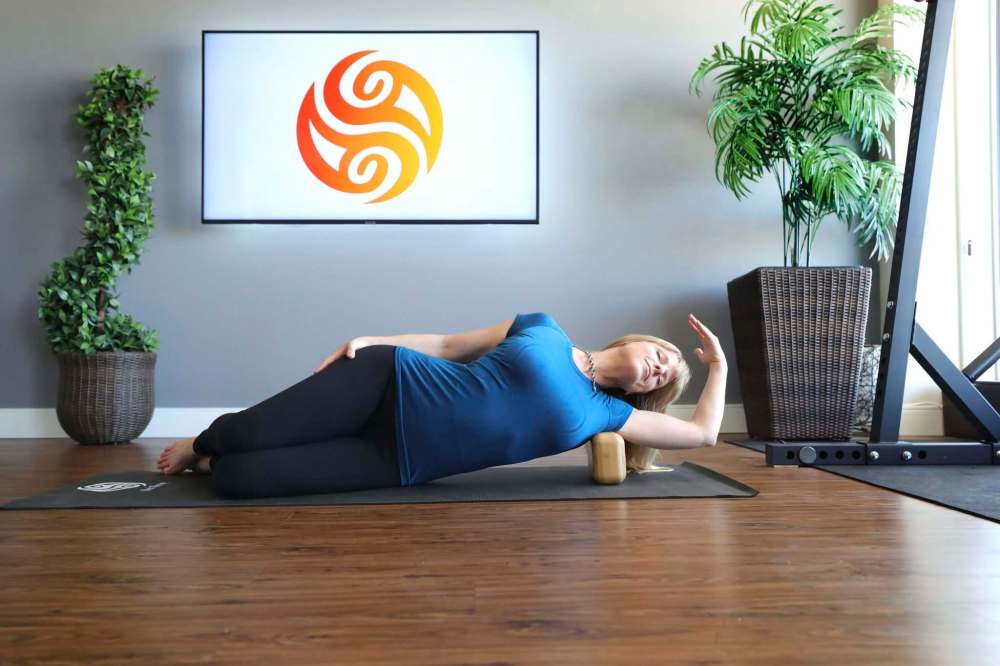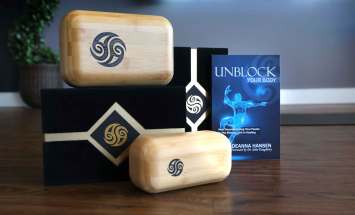Doing wood work Winnipegger created block therapy to help people suffering from chronic pain, disrupted sleep and other ailments
Read this article for free:
or
Already have an account? Log in here »
To continue reading, please subscribe:
Monthly Digital Subscription
$0 for the first 4 weeks*
- Enjoy unlimited reading on winnipegfreepress.com
- Read the E-Edition, our digital replica newspaper
- Access News Break, our award-winning app
- Play interactive puzzles
*No charge for 4 weeks then price increases to the regular rate of $19.00 plus GST every four weeks. Offer available to new and qualified returning subscribers only. Cancel any time.
Monthly Digital Subscription
$4.75/week*
- Enjoy unlimited reading on winnipegfreepress.com
- Read the E-Edition, our digital replica newspaper
- Access News Break, our award-winning app
- Play interactive puzzles
*Billed as $19 plus GST every four weeks. Cancel any time.
To continue reading, please subscribe:
Add Free Press access to your Brandon Sun subscription for only an additional
$1 for the first 4 weeks*
*Your next subscription payment will increase by $1.00 and you will be charged $16.99 plus GST for four weeks. After four weeks, your payment will increase to $23.99 plus GST every four weeks.
Read unlimited articles for free today:
or
Already have an account? Log in here »
Hey there, time traveller!
This article was published 18/03/2021 (1728 days ago), so information in it may no longer be current.
Welcome to Jen Tries, a semi-regular feature in which Free Press columnist Jen Zoratti will try something new and report back. In this instalment, Jen Tries… Block Therapy.
‘Can I stand on you?”
Deanna Hansen has just spent some time working on my legs and now we’re tackling my notoriously tight hips. To do so, she would like to stand on me.
Clearly, this is no ordinary massage.
Hansen is a Winnipeg-based certified athletic therapist and the founder of fluid isometrics and block therapy, an innovative bodywork practice she describes as a “meditation, exercise and therapy all in one” and something I was inelegantly describing as “this thing where you lie on hard wooden blocks and feel better.”

Turns out, I wasn’t totally off. In fluid isometrics, a practitioner uses her hands to “bring heat into an area and melt frozen fascia, releasing it from the area and thereby promoting increased blood and oxygen flow.” Block therapy, meanwhile, is the self-care version; instead of using a practitioner’s hands, the block gets into those deep spaces in order to release fascial adhesions that Hansen says hold the body out of alignment.
To understand block therapy, one must first learn what fascia is. Fascia is the web of connective tissue, mostly made of collagen, beneath the skin that, in short, holds us together. Fascia has become a sort of buzzword over the past few years, especially in the context of Instagram influencers looking to “blast your cellulite.” It’s also an emerging field of scientific study, especially as treatments such as “myofascial release” have become more commonplace offerings in massage therapy and chiropractic clinics.
Hansen, however, has been thinking about fascia for 20 years. She has a kindred spirit in New York City biochemist Ida Rolf, another early adopter who also believed we ought to be looking to the fascia to address chronic pain and imbalances. Rolf developed her own fascia-manipulating bodywork practice, Rolfing, which was popular in the 1970s.
The seeds for block therapy were sown in Hansen’s athletic therapy practice. “I always focused on deep-tissue work,” she explains. “When I was 30 years old, I’d already been practising for five years, and I had a really successful practice because I had good strong hands, and I gave good deep-tissue massages.” (I can personally attest to the strength of her hands, holy cow.)

But in her own body, things weren’t feeling so good. She was carrying extra weight. She was suffering from chronic pain and debilitating anxiety attacks.
“This one anxiety attack, in particular, was so scary, because I couldn’t actually catch my breath,” she says. “I literally thought in the moment, I was going to die. And for some reason, in that moment, I buried my hand into my belly and I let out a gasp of pain. But the pain brought me out of my attack. And it brought me back to the ground.”
Hansen continued to perform deep-tissue massages on her belly and started seeing improvements in both body and mood, so she started flipping massage clients onto their backs to hone and develop her technique.
“I spent a number of years working with in my clinic with massage therapists, having them trained in my practice, but I always wanted to teach self-care,” she says. “And I tried teaching people how to use their hands, but there were limiting factors to that, because we really want to get all the way to the bone with the fascia and it’s challenging to use your hands on your own body.”
Enter the block. About 10 years ago, Hansen was studying to become a Iyengar yoga teacher. Her instructor got her to do a sideline twist over a bolster, but Hansen spotted a rectangular yoga block and wanted to lie on that instead. It was her lightbulb moment.
“I thought, ‘Holy smokes, I don’t need to use my hands in my own body. I can move my body into this wooden block.”
The only problem? Yoga blocks have sharp edges. The ones she designed specifically for block therapy have smooth sides and were originally crafted from cedar, now bamboo.

Hansen quit her athletic therapy practice to focus on fluid isometrics and block therapy full time. She’s trained more than 160 block therapy instructors who can be found all over the world, and, over the last decade, Hansen says the global community of people practising block therapy has grown to about 25,000. Hansen also recently released a guide book called Unblock Your Body: How Decompressing Your Fascia Is the Missing Link in Healing via Quantum Living Press.
Trish Field is a block enthusiast and Free Press reader who first suggested I try block therapy. She was first introduced to it in October 2017.
“It was not love at first sight, but I am so grateful that I chose to persevere and add blocking to my wellness routine,” she tells me via email. “The noticeable changes to my body and well-being are numerous. I no longer have lower back and neck pain, my posture and gait are significantly better, sleep patterns have improved, my feet are stronger and healthier and maintaining a healthy weight is easier.”
I get why Field says it wasn’t love at first sight. I have never been one for yoga or meditation or even stretching, to be honest, operating under the erroneous belief that if you weren’t breathless and sweaty at the end of a class, it wasn’t “worth it.” So the idea of lying on a hard block and holding a posture for three minutes didn’t exactly appeal to me. But I rolled out a mat, got my block and cued up a virtual lesson led by Hansen and her nephew.
It seems simple, on its face, to lie on a block. Too simple, even. But there’s actually quite a bit to think about while you’re doing it. “There’s three parts to block therapy: creating space through lying on the block and moving in it as you’re instructed, inflating that space through proper oxygenation through using your diaphragm correctly, and then maintaining that space through proper foundational awareness,” Hansen tells me.
There’s also the intimidation piece. “When people have a lot of chronic pain, the concept of lying on something hard can, at first, seem scary. So what we always teach people is: this isn’t causing you pain — it’s connecting to your deeper pain that you already have and bringing it to the surface so that you can bring it to your awareness and then get rid of it.”
The pain I felt wasn’t the kind you’d feel if you sustained an injury or trauma; it was more like a warmth that spreads. What I found, though, was that blocking made me more aware of my breath and posture, specifically the way I sit (badly), how I stand (also not great) and even my sleeping position (off-duty contortionist). And it is meditative; it puts me back in my body.
A few weeks later, Hansen invited me to do fluid isometrics, which is how I found myself with Hansen standing on me, working my hips with her heels and almost her full body weight. She describes fluid isometrics as “blocking on steroids” and she isn’t wrong. But while I found it very intense and sometimes tender — which I alerted her to and she eased off — it also felt incredibly productive.
I haven’t been doing either therapy long enough to attest to some of the bigger claims. But, to quote Latin pop sensation Shakira, my hips don’t lie. They feel great.
jen.zoratti@freepress.mb.ca
Twitter: @JenZoratti

Jen Zoratti is a Winnipeg Free Press columnist and author of the newsletter, NEXT, a weekly look towards a post-pandemic future.
Our newsroom depends on a growing audience of readers to power our journalism. If you are not a paid reader, please consider becoming a subscriber.
Our newsroom depends on its audience of readers to power our journalism. Thank you for your support.








